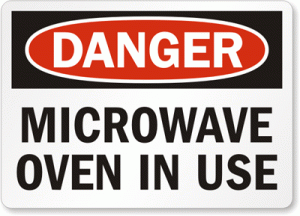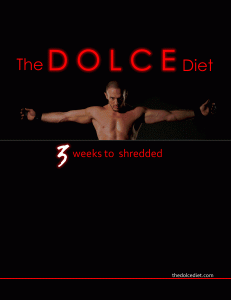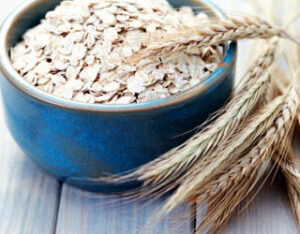 Why did the Russians Ban an Appliance Found in 90% of American Homes?
Why did the Russians Ban an Appliance Found in 90% of American Homes?
By: Dr. Joseph Mercola
By now, you probably know that what you eat has a profound impact on your health. The mantra, “You are what you eat” is really true.
But you need to consider not only WHAT you buy, but how you cook it.
Eating most of your food raw is ideal. But most of us are not going to be able to accomplish a completely raw diet, and we’ll end up cooking some percentage of our food.
Smart food preparation starts with high quality foods and food preparation and that means saying sayonara to your microwave oven. Need to sterilize a dishcloth? Use your microwave. But zapping your casserole is a BAD idea if you are interested in preparing healthy food.
Why the no nukes policy?
When it comes to microwave ovens, the price for convenience is to compromise your health. In this article, I will review what we know about the effects microwaves on your food and on your body.
Sad State of Our Soils
Over the past century, the quality of fresh food has declined due to soil depletion, unsustainable farming practices, overproduction of crops, and the use of pesticides and herbicides. You can no longer assume you’re getting all of the vitamins, minerals, enzymes, and phytonutrients you need by eating a multitude of fresh produce—even if you’re eating organically.
Not surprisingly, a calorie today will provide you less nutrition than a calorie from 100, or even 50 years ago.
Three recent studies of historical food composition have shown 5 to 40 percent declines in some of the minerals in fresh produce, and another study found a similar decline in our protein sources.[1]
So now, more than ever, you must be careful to maximize the “bang for your buck” when it comes to the foods you eat.
Research shows that your microwave oven will NOT help you in these efforts—and in fact will threaten your health by violently ripping the molecules in your food apart, rendering some nutrients inert, at best, and carcinogenic at its worst.
Convenience Comes at Significant Toxic Threat to You and Your Family
Microwaves heat food by causing water molecules in it to resonate at very high frequencies and eventually turn to steam which heats your food. While this can rapidly heat your food, what most people fail to realize is that it also causes a change in your food’s chemical structure.
There are numerous issues that have emerged since microwave ovens were first introduced to consumers more than 40 years ago, besides depleting your food’s nutritional value, which will be addressed a bit later.
The first thing you probably noticed when you began microwaving food was how uneven the heating is.
“Hot spots” in microwaved food can be hot enough to cause burns—or build up to a “steam explosion.” This has resulted in admonitions to new mothers about NOT using the microwave to heat up baby bottles, since babies have been burned by super-heated formula that went undetected.
Another problem with microwave ovens is that carcinogenic toxins can leach out of your plastic and paper containers/covers, and into your food.
The January/February 1990 issue of Nutrition Action Newsletter reported the leakage of numerous toxic chemicals from the packaging of common microwavable foods, including pizzas, chips and popcorn. Chemicals included polyethylene terpthalate (PET), benzene, toluene, and xylene. Microwaving fatty foods in plastic containers leads to the release of dioxins (known carcinogens) and other toxins into your food. [8] [2]
One of the worst contaminants is BPA, or bisphenol A, an estrogen-like compound used widely in plastic products. In fact, dishes made specifically for the microwave often contain BPA, but many other plastic products contain it as well.
Microwaving distorts and deforms the molecules of whatever food or other substance you subject to it. An example of this is blood products.
Blood is normally warmed before being transfused into a person. Now we know that microwaving blood products damages the blood components. In fact, one woman died after receiving a transfusion of microwaved blood in 1991 , which resulted in a well-publicized lawsuit.
Microwave Radiation Leakage
You may have heard that there is some danger of microwaves escaping from your microwave while it’s operating. This was more of a risk with earlier models than with recent ones, which undergo more rigorous testing.
Theoretically, there are very small amounts of radiation leakage through the viewing glass, but the FDA reports these levels are “insignificant” and “well below the level known to harm people.”
The FDA has been regulating microwave ovens since 1971 through its electronic product radiation control program, which is mandated by the Electronic Product Radiation Control provisions of the Food Drug and Cosmetic Act[3] .
The FDA limits the amount of microwaves that can leak from an oven throughout its lifetime to 5 milliwatts (mW) per square centimeter at approximately 2 inches from the oven surface. Because microwave energy decreases dramatically as you move away from the source of the radiation, a measurement made 20 inches from your oven would be approximately one-hundredth of the value measured at 2 inches.[2]
The federal standard also requires all ovens to have “two independent interlock systems that stop the production of microwaves the moment the latch is released or the door is opened.”
And a monitoring system is also required, which stops the operation if one or both interlock systems fail.
You would think, with all these tests and regulations, that you’d be safe. However, according to Powerwatch, a non-profit independent organization with a central role in the microwave radiation debate:
“Even when the microwave oven is working correctly, the microwave levels within the kitchen are likely to be significantly higher than those from any nearby cellular phone base-stations. Remember also that microwaves will travel through walls if the microwave oven is against an inside wall.”
Powerwatch also states that we don’t really know if the current regulations about leakage are truly safe and recommends ovens be checked at least annually, since microwave emissions can change with normal use.
You might also consider purchasing a $20 testing device that allows you to check the radiation in your home.
Make sure that, if you are going to use your microwave for cleaning sponges or for any use at all, regularly examine the door and hinges to make sure they are sealing properly. If the door doesn’t close correctly, or if it’s warped, bent, or otherwise damaged, don’t use it at all!
Since your eyes are known to be particularly susceptible to microwave radiation (high microwave exposures are known to cause cataracts), I recommend stepping away from your microwave while it’s in use.
New Study Confirms Microwaves Affect Your Heart
A recent study examining the effects 2.4 GHz radiation (which is the frequency of radiation emitted by Wifi routers and microwave ovens) on the heart was just completed. The study found “unequivocal evidence” that microwave frequency radiation affects the heart at non-thermal levels that are well below federal safety guidelines, according to Dr. Magda Havas of Trent University[4] .
Dr. Havas says:
“This is the first study that documents immediate and dramatic changes in both heart rate and heart rate variability caused by an approved device that generates microwaves at levels well below (0.3 percent) federal guidelines in both Canada and the United States.”
No longer can skeptics claim that microwaves produce no immediate biological effects at ordinary household levels!
The study will be appearing in a peer-reviewed journal sometime during the summer of 2010. If you are experiencing rapid or irregular heartbeat, pain or pressure in your chest, you will want to visit your physician and share this video with him or her (second video on this page).
There is also evidence that this same frequency of radiation causes blood sugar to spike in susceptible individuals and may actually be the cause of one type of diabetes. For details about this, watch the first video below.
Microwaving Also Zaps the Nutrients Right Out of Your Food
There has been surprisingly little research on how microwaves affect organic molecules, or how the human body responds to consuming microwaved food.
Wouldn’t you expect that a product that sits in more than 90 percent of kitchens, as well as practically every break room in the country, would have been thoroughly investigated for safety?
The handful of studies that have been done generally agree, for the most part, that microwaving food damages its nutritional value. Your microwave turns your beautiful, organic veggies, for which you’ve paid such a premium in money or labor, into “dead” food that can cause disease!
Heating food, in and of itself, can result in some nutrient loss, but using microwaves to heat food introduces the additional problem of the “microwave effect,” a phenomenon that will be discussed in detail later.
The majority of studies on microwaves and nutrition were conducted prior to 2000, I suspect because the focus of radiation research of late has shifted toward a more ominous threat: environmental radiation from electromagnetic devices, such as cell phones and computers, which has mushroomed into a gigantic cloud of electrosmog worldwide over the past decade.
Nevertheless, some excellent scientific data has been gathered regarding the detrimental effects of microwaves on the nutrients in your food:
A study published in the November 2003 issue of The Journal of the Science of Food and Agriculture[5] found that broccoli “zapped” in the microwave with a little water lost up to 97 percent of its beneficial antioxidants. By comparison, steamed broccoli lost 11 percent or fewer of its antioxidants. There were also reductions in phenolic compounds and glucosinolates, but mineral levels remained intact.
A 1999 Scandinavian study of the cooking of asparagus spears found that microwaving caused a reduction in vitamin C[6] .
In a study of garlic, as little as 60 seconds of microwave heating was enough to inactivate its allinase, garlic’s principle active ingredient against cancer[7] .
A Japanese study by Watanabe showed that just 6 minutes of microwave heating turned 30-40 percent of the B12 in milk into an inert (dead) form[8] . This study has been cited by Dr. Andrew Weil as evidence supporting his concerns about the effects of microwaving. Dr. Weil wrote:
“There may be dangers associated with microwaving food… there is a question as to whether microwaving alters protein chemistry in ways that might be harmful.”
A recent Australian study[9] showed that microwaves cause a higher degree of “protein unfolding” than conventional heating.
Microwaving can destroy the essential disease-fighting agents in breast milk that offer protection for your baby. In 1992, Quan found that microwaved breast milk lost lysozyme activity, antibodies, and fostered the growth of more potentially pathogenic bacteria[10] .
Quan stated that more damage was done to the milk by microwaving than by other methods of heating, concluding: “Microwaving appears to be contraindicated at high-temperatures, and questions regarding its safety exist even at low temperatures.”
Another study about breast milk/infant formula by Lee in 1989[11] found vitamin content becomes depleted by microwaving, and certain amino acids are converted into other substances that are biologically inactive. Some altered amino acids are poisons to the nervous system and kidneys. (Numerous authors mention this study, yet I was unable to find the original article/study, so I cannot personally validate.)
Although many of the above studies are not new, there is certainly ample evidence that microwaving is NOT good for your food.
How Your Microwave Actually Heats Your Food
Microwaves are a form of electromagnetic radiation—waves of electrical and magnetic energy moving together through space. EM radiation ranges from very high energy (gamma rays and x-rays) on one end of the spectrum to very low energy (radio waves) on the other end of the spectrum.
Microwaves are on the low energy end of the spectrum, second only to radio waves. They have a wavelength of about 4.8 inches—about the width of your head.
Microwaves are generated by something called a magnetron (a term derived from the words “magnet” and “electron”), which is also what enabled airborne radar use during WWII. Hence the early name for microwave ovens: radar ranges.
A magnetron is a tube in which electrons are subjected to both magnetic and electrical fields, producing an electromagnetic field with a microwave frequency of about 2,450 megaHertz (MHz), which is 2.4 gigaHertz (GHz).
Microwaves cause dielectric heating. They bounce around the inside of your oven and are absorbed by the food you put in it. Since water molecules are bipolar, having a positive end and negative end, they rotate rapidly in the alternating electric field. The water molecules in the food vibrate violently at extremely high frequencies—like millions of times per second—creating molecular friction, which heats up the food.
If the food or object place in the microwave had no water it would not be able to have this resonance heating type effect and would remain cool. Or, as investigative journalist William Thomas[12] calls it, “electrical whiplash.”
Structures of the water molecules are torn apart and forcefully deformed. This is different than conventional heating of food, whereby heat is transferred convectionally from the outside, inward. Microwave cooking begins within the molecules where water is present.
Contrary to popular belief, microwaved foods don’t cook “from the inside out.” When thicker foods are cooked, microwaves heat the outer layers, and the inner layers are cooked mostly by the conduction of heat from the hot outer layers, inward.
Since not all areas contain the same amount of water, the heating is uneven.
Additionally, microwaving creates new compounds that are not found in humans or in nature, called radiolytic compounds. We don’t yet know what these compounds are doing to your body.
In addition to the violent frictional heat effects, called thermic effects, there are also athermic effects, which are poorly understood because they are not as easily measured. It is these athermic effects that are suspected to be responsible for much of the deformation and degradation of cells and molecules. [13]
As an example, microwaves are used in the field of gene altering technology to weaken cell membranes. Scientists use microwaves to actually break cells apart. Impaired cells then become easy prey for viruses, fungi and other microorganisms.8
Another word for these athermic effects is the “microwave effect,” a subject of controversy that I’ll get into a bit later.
Microwave Sickness
When your tissues are directly exposed to microwaves, the same violent deformations occur and can cause “microwave sickness.”
People who have been exposed to high levels of microwave radiation experience a variety of symptoms, including:
Insomnia, night sweats, and various sleep disturbances
Headaches and dizziness
Swollen lymph nodes and a weakened immune system
Impaired cognition
Depression and irritability
Nausea and appetite loss
Vision and eye problems
Frequent urination and extreme thirst
There is a good amount of data emerging that people are suffering, to various degrees, these kinds of symptoms from living next to cell phone towers and other high-frequency radiation emitting antennas, which emit microwaves around the clock.
According to Professor Franz Adelkofer, a leading scientist in the area of biological effects of EMF fields:
“There is real evidence that hyperfrequency electromagnetic fields can have geno-toxic effects. And this damaged DNA is always the cause of cancer.
We’ve found these damaging effects on the genes at levels well below the safety limits. That’s why we think it’s urgent to base our safety limits on the biological effects, not the thermic ones.
They should be based on biology, not on physics.”
Twenty Years of Russian Research Supports Microwave Concerns
The Nazis are credited with inventing the first microwave-cooking device to provide mobile food support to their troops during their invasion of the Soviet Union in World War II[14] . These first microwave ovens were experimental. After the war, the US War Department was assigned the task of researching the safety of microwave ovens.
But it was the Russians who really took the bull by the horns.
After the war, the Russians had retrieved some of these microwave ovens and conducted thorough research on their biological effects. Alarmed by what they learned, the Russians banned microwave ovens in 1976, later lifting the ban during Perestroika.
Twenty years of Russian research (and German studies as far back as 1942 Berlin) make a strong argument against the safety of microwave cooking.
Their findings led the Russian government to issue an international warning about possible biological and environmental damage associated with the use of microwave ovens and other similar frequency electronic devices (e.g. mobile phones).
I was not able to personally evaluate any of these older bodies of research, since those documents are now difficult to track down, so I can’t attest to their methodology or conclusions. All you can do is weigh their findings appropriately, as best you can.
The Powerwatch article cited above summarizes the Russian research quite well, which I will duplicate below.
Russian investigators found that carcinogens were formed from the microwaving of nearly all foods tested.
The microwaving of milk and grains converted some of the amino acids into carcinogenic substances.
Microwaving prepared meats caused the formation of the cancer-causing agents d-Nitrosodienthanolamines.
Thawing frozen fruits by microwave converted their glucoside and galactoside fractions into carcinogenic substances.
Extremely short exposure of raw, cooked or frozen vegetables converted their plant alkaloids into carcinogens.
Carcinogenic free radicals were formed in microwaved plants—especially root vegetables.
Structural degradation leading to decreased food value was found to be 60 to 90 percent overall for all foods tested, with significant decreases in bioavailability of B complex vitamins, vitamins C and E, essential minerals, and lipotropics (substances that prevent abnormal accumulation of fat).
I might add that this finding is supported by the 1998 Japanese study by Watanabe7 about vitamin B12 in milk, cited above.
The Swiss Clinical Study: Hans Hertel
Some fairly compelling evidence supporting the destructive effects of microwaves comes from a highly cited study by a Swiss food scientist named Hans Hertel. Dr. Hertel was the first scientist to study the effects of microwaved foods on the blood and physiology of human beings.
His small study, coauthored by Dr. Bernard Blanc of the Swiss Federal Institute of Technology and the University Institute for Biochemistry, revealed the degenerative forces produced by microwave ovens on the foods they cooked.
Dr. Hertel concluded that microwave cooking changed the nutrients in the food, and that changes took place in the blood that could cause negative health effects.
Hertel’s conclusions were that microwaving food resulted in:
Increased cholesterol levels
Decreased numbers of leukocytes (white blood cells), which can suggest poisoning
Decreased numbers of red blood cells
Production of radiolytic compounds
Decreased hemoglobin levels, which could indicate anemia
Not surprisingly, Dr. Hertel’s study was met with great resistance from those with much to lose.
A gag order against Dr. Hertel was issued by a Swiss trade organization in 1992, which was later removed in 1998. But an American journalist, Tom Valentine, published the results of Hertel’s study in Search for Health in the spring of 1992[15] .
The study was not without its shortcomings. It involved only eight participants, of which Hertel was one. As compelling as his findings were, his methodology did not stand up to the scientific rigors of the field.
In spite of Hertel’s methodological shortcomings, his findings do raise concerns about what this form of radiation is doing to your food and should be taken as a launching point to larger, more robust studies in the future.
Hertel wrote:
“There are no atoms, molecules, or cells of any organic system able to withstand such a violent, destructive power for any period of time. This will happen even given the microwave oven’s low power range of milliwatts.”
And then there is the issue of biophotons.
Possible Microwave Effects on Your Biophotons
Biophotonics is the study, research, and applications of photons in their interactions within and on biological systems. Much of the work in the area of biophotons was done in Germany. Dr. Dietrich Klinghardt discusses biophotons in our 2008 interview.
Biophotons are the smallest physical units of light that are stored in and used by all biological organisms—including you. Vital sun energy finds its way into your cells via the food you eat, in the form of these biophotons.
Biophotons contain important bio-information and are very important to many vital processes in your body. They are partly responsible for your feeling of vitality and well-being. You gain biophotons by eating foods rich in them, such as naturally grown fresh vegetables and sun-ripened fruits, which are rich in light energy.
The more light energy a food is able to store, the more nutritious it is.
If the “microwave effect” exists (as you shall see, there is a huge amount of evidence that it does), then microwaves can potentially destroy biophotons in the same way that it alters other structures, rendering your food dead and lifeless.
It seems quite plausible that microwaves could disrupt or destroy biophotons, since they are capable of breaking apart DNA bonds!
As far as I can find, there haven’t been any studies of the direct effects of microwave radiation on biophotons, but it seems like an important angle of investigation for the future.
Long-Term Effects of Exposure to Non-Ionizing Radiation
One of the basic controversies about the effects of microwaves centers on whether or not microwaves exert some sort of force beyond heat, commonly called “microwave effect” or “athermic effect.”
It is first necessary that you understand the difference between ionizing radiation and non-ionizing radiation.
There are two basic forms of radiation: ionizing and non-ionizing[16] :
Ionizing Radiation: Creates charged ions by displacing electrons in atoms, even without heat. Examples are radiation emitted from radioactive substances in rocks and soil, cosmic rays of the sun, and radiation from man-made technology such as x-rays machines, power stations, and nuclear reactors.
Non-ionizing Radiation: Can change the position of atoms but not alter their structure, composition, and properties. Examples are visible light, ultraviolet and infrared waves, waves from radio or television, cellular phones, microwaves, and electric blankets.
Despite not being able to break atoms apart, non-ionizing radiation (such as microwaves) CAN cause physical alterations.
For example, sunlight can damage your skin and eyes. Overexposure to radiation can affect tissues by causing molecular damage, DNA mutations, and other changes that can lead to cancer.
The serious concern is, with all of this radiation surrounding us from cell and cordless phones, radio towers, satellites, broadcast antennas, military and aviation radar, home electronic devices, computers and Internet, we are all part of an involuntary mass epidemiological experiment, on a scale never before seen in the history of the human race.
And the truth is that we don’t really KNOW what long term, low-level (but persistent) radiation does to us—even the non-ionizing type.
But here are some of the things we DO KNOW:[17]
Effects at low levels can be more noticeable than at higher levels. There is something called a “window effect,” meaning an effect occurring only at specific frequencies or power densities, but not occurring just above or below them. A number of studies demonstrate effects of microwave radiation on blood cells via this phenomenon.
For a complete discussion of this, you can read Microwaving Our Planet, written by Arthur Firstenberg, president of the Cellular Phone Taskforce.
Cindy Sage of Sage Associates, an environmental consulting firm, has compiled a comprehensive list of studies[18] showing biological effects at radiofrequency exposure levels far below what would be explainable as “thermic effects” and well within the range you are commonly exposed to every day.
Resonance intensifies biological effect. Resonance occurs when a form of radiation has a similar frequency as a body part. For example, microwave frequencies are similar to the frequencies of your brain!
Studies are typically done for short exposure periods, at higher intensities. Scientists claim that duration of exposure is equally important to intensity of exposure, but is often NOT studied, and that long-term, low-level exposure can have effects equivalent to short-term, more intense exposure.
The effects of radiation are cumulative. Your body becomes more sensitive to it over time.
There are no longer any control groups, since human beings are all now exposed to such pervasive radiation. Lack of a control group makes it even more challenging to conduct meaningful studies.
The point is, standing in your kitchen while your microwave is zapping your dinner, night after night, will not make you glow in the dark. But over the months and years, what is the cumulative effect on your body and health?
Why expose yourself to these potential dangers when there are safer alternatives for cooking available?
Is Microwaving Food Any More Dangerous than Heating it with a Conventional Oven?
Some experts claim that the effects microwaves have on molecules can all be explained simply as the “thermic effect” of heating—in other words, microwave cooking is no more detrimental to food than conventional heating.
They argue that, since microwaves are non-ionizing radiation, then it’s impossible for them to damage your blood cells, or eradicate the folic acid in your spinach.
Others have proposed there is some sort of “microwave effect” that causes changes in the molecules in a way that conventional heating does not. For many years, the party line was that “microwave effect” is a myth.
However, study after study has resulted in evidence to the contrary, showing effects that cannot be explained away as simple thermal effects.
In a letter entitled “DNA and the Microwave Effect”[19] (sourced as Penn State University, 2001), the author reviews the history of the controversy surrounding the microwave effect and the research findings to date. He explains that, although fundamentals of thermodynamics and physics would tell you the microwave effect is impossible, studies keep turning up evidence of its existence.
Some of the main points made in the letter are the following:
Microwave heating and conventional heating may appear identical on a “macro” level, but the two appear very different on a molecular level.
Microwaves are effective for sterilization, which has been studied for several decades. There is controversy, however, is about whether it’s the heat they generate or if it’s something else altogether.
One scientist (Kakita 1995[20] ) was successful in demonstrating that microwaves are capable of extensively fragmenting and destroying viral DNA, something that cannot be accomplished by heating alone.
Multiple studies offer evidence that there are multiple mechanisms for breaking apart DNA without ionizing radiation, but no theory currently exists to explain this phenomenon.
Some scientists are taking advantage of the microwave effect and using microwaves in the laboratory to greatly accelerate chemical reactions, sometimes by a factor of a thousand, resulting in the completion of reactions in minutes that formerly took days or months and a lot of toxic chemicals[21] .
This newly found interest in “microwave chemistry” has spurred skeptic scientists into taking another look at what microwaves actually do and how they do it.
Sometimes common sense trumps empirical evidence.
The Penn State letter/article said it best:
“…It would seem there is reason to believe that the microwave effect does indeed exist, even if it cannot yet be adequately explained. What we know at present is somewhat limited, but there may be enough information already available to form a viable hypothesis.
The possibility that electromagnetic radiation in the non-ionizing frequency range can cause genetic damage may have profound implications on the current controversy involving EM antennae, power lines, and cell phones.”
Breaking Free of Your Microwave: A Few Basic Tips
Am I asking you to toss your microwave oven into the nearest dumpster?
Not necessarily. It can be a useful tool for cleaning. But if real estate in your kitchen is at a premium, it should probably be the first thing to go.
You really CAN survive sans microwave—people are living quite happily without one, believe it or not. You just have to make a few small lifestyle adjustments, such as:
Plan ahead. Take your dinner out of the freezer that morning or the night before so you don’t end up having to scramble to defrost a 5-pound chunk of beef two hours before dinnertime.
Make soups and stews in bulk, and then freeze them in gallon-sized freezer bags or other containers. An hour before meal time, just take one out and defrost it in a sink of water until it’s thawed enough to slip into a pot, then reheat it on the stove.
A toaster oven makes a GREAT faux-microwave for heating up leftovers! Keep it at a low temperature — like 200-250 degrees F — and gently warm a plate of food over the course of 20-30 minutes. Another great alternative is a convection oven. They can be built in or purchased as a relatively inexpensive and quick safe way to heat foods
Prepare your meals in advance so that you always have a good meal available on those days when you’re too busy or too tired to cook.
Try eating more organic raw foods. This is the best way to and improve your health over the long run.
Original story posted on www.Mercola.com












